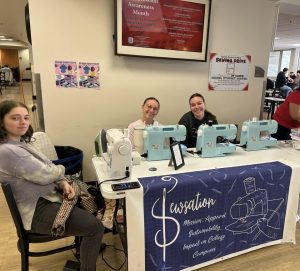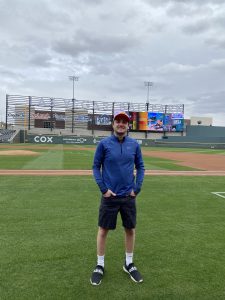The music that rings out every day at noon has been a campus staple since the 1960s, but the music system, called a carillon, has evolved to keep up with modern technology.
Retired education professor Ray Zarvell, who began working at Bradley in administration in 1970, has had a hand in updating the carillon throughout the years.
“Bradley Hall burned around 1963, and after reconstructing it, they installed the carillon in speakers on the building,” he said.
The carillon was played by a roll of punched paper that caused little hammers to hit rods, or a keyboard console, Zarvell said.
“It was all mechanical in nature, and that existed for a number of years,” he said. “Then I came on the scene and tried to resurrect it. I’d heard it before and wanted to get it going again. I would play it manually at noon, but the wires were deteriorating and faded away.”
Bradley Hall was renovated again in 2005, when a new, more electronic, carillon was installed.
“Now it is a console with two manual keyboards and is played randomly and automatically,” he said. “But the songs are a little bit outdated, and we can’t play the newest songs with the automatic music library system, so I used to hire students to play every day at noon.”
Department of Music Chair David Vroman, who is now in charge of the carillon, said students do not play the carillon anymore except on special occasions.
“Students have played maybe once or twice over the past four years,” he said. “Things are much different now that the carillon is all electronic.”
Vroman said the biggest challenge is finding time to allow students to play the carillon.
“Music students are very busy people, and they’re usually spending time practicing,” he said. “But it is really nice that if we did need someone to play it, that capability is still retained.”
Though difficult, giving students the opportunity to play is not entirely out of the question, Vroman said.
“One of the things this carillon has the capability of doing is having a student go up there and record,” he said. “It gives us more flexibility. We have talked about that. As with anything else, it’s about finding the time to do that, but is on a list of things we’d like to do.”
Vroman said there are benefits with having the ability to record songs.
“The interest in trying to record would be to use Bradley songs,” he said. “The library has an album from ‘78 of six or seven Bradley songs. There are songs that have kind of fallen by the wayside, like the song of allegiance and a parting song, that I think of as old traditions.”
Played by hand or by recording, Vroman said the carillon adds an aspect of class to the university.
“[The carillon] really makes it feel like a college campus,” he said.




